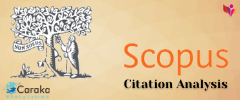Influence of Social Media on the Social Behavior of Students as Viewed by Primary School Teachers in Kwara State, Nigeria
Abstract
Nowadays, lectures and teachings have been conducted through social media. However, social media has its downside which when students and youths are not well monitored, they will absorb the negative side from their social media. Hence, this survey focused on the influence of social media on the social behavior of students as viewed by primary school teachers in Ilorin Metropolis, Kwara State, Nigeria. The survey is descriptive with two hundred primary school teachers selected as participants. A research question was raised and answered, and there were three hypotheses formulated and tested using t-test and ANOVA at a p-value of 0.05. The findings revealed that students’ usage of social media had a negative influence on their social behavior. In addition, there were no statistical differences in the view of participants on the influence of social media on the social behavior of teachers based on gender, age, and educational level. Therefore, primary school teachers need to sensitize students on the appropriate use of social media to improve their social behavior among others was recommended.
Keywords
Full Text:
PDFReferences
Abdullah, M. C., Elias, M. R. & Jegak, U. (2009). Adjustment among first year students in Malaysian University. European Journal of Social Sciences, 8(3), 13.
Adegboyega, L. O. (2019). Influence of social media on sexual behaviour of youth in Kwara State: Implications for counselling practice. Canadian Journal of Family and Youth, 11(1), 85-103.
Al-Sharqi, L., Hashim, K. & Kutbi, I. (2015). Perceptions of Social Media Impact on Social Behavior of Students: A Comparison between Arts and Science Faculty. International Journal of Education and Social Science, 2(4), 122-131. DOI: 10.29333/ojcmt/2574
Angus, E., Thelwall, M., & Stuart, D. (2008). General patterns of tag usage among university groups in Flickr. Online Information Review, 32(1), 89-101. DOI: 10.1108/14684520810866001
Branas-Garza, P. B., Espin, A. M. & Neuman, S. (2013). Effects of religiosity on social behavior: Experimental evidence from a representative sample of Spaniards. Discussion Paper No. 7683. The Institute for the Study of Labour (IZA) in Bonn.
Dourish, P. (2001). Seeking a foundation for context: Aware computing. Human-Computer Interaction, 15(2-1), pp. 229-241. DOI: 10.1207/S15327051HCI16234_07
Giota, K. G. & Kleftaras, G. (2013). The role of personality and depression in problematic use of social networking sites in Greece.
Cyberpsychology, 7(3). DOI: 10.5817/CP2013-3-6
Howard, P. N. & Parks, M. R. (2012). Social Media and Political Change: Capacity, Constraint, and Consequence. Journal of Communication, 62(2). DOI: 10.1111/j.1460-2466.2012.01626.x
Kaplan, A. & Haenlein, M. (2010). The fairyland of second life: About virtual social worlds and how to use them. Business Horizon, 52(26), 563-572. DOI: 10.1016/j.bushor.2009.07.002
Macnamara, J, & Zerfass, A. (2012). Social Media Communication in Organizations: The Challenges of Balancing Openness, Strategy, and Management. International Journal of Strategic Communication, 6(4), 287-308. DOI: 10.1080/1553118X.2012.711402
Lewis, B. K. (2010). Social media and strategy communication. Public Relations Journal, 4(3), 1-10
Lowisz, S. (2014). The Influence of Social Media in Today’s Culture. Retrieved from https://foclonline.org/sites/live.foclonline.org//files/outline_345.pdf
Muinde, R. M. (2015). The Influence of Media on Behavior among Secondary School Students, Kitui County. Retrieved from http://erepository.uonbi.ac.ke/handle/11295/90501
Muritala, I. A. & Theophilus, A. B. (2014). Influence of Social Media Usage on Self-Image and Academic Performance among Senior Secondary School Students in Ilorin-West Local Goverment, Kwara State. Research on Humanities and Social Sciences. 4(14), 58-62.
Nicole, E. B., Lampe, C. & Steinfield, A. (2009). Social Network Sites and Society: Current Trends and Future Possibilities. Interaction, (16)1, 6-9. DOI: 10.1145/1456202.1456204
Nicole, E. B. & Boyd, D. M. (2008). Social Networking Sites: Definition, History, and Scholarship. Journal of Computer-Mediated Communication, 13(1), 210-230. DOI: 10.1111/j.1083-6101.2007.00393.x
Rafferty, F. (2009). Boys should be boys-is it that simple? Education Journal, 16, 32-33.
Rajeev, M. M. & Jobilal. (2015). Effects of Social Media on Social Relationships: A Descriptive Study on the Impact of Mobile Phones among Youth Population. International Research Journal of Social Sciences. 4(2), 11-16.
Sharma, R. A. (2008). Advanced Statistics in Education and Psychology. Meerut: Lall Book Depot.
DOI: https://doi.org/10.53400/mimbar-sd.v7i1.23479
Refbacks
- There are currently no refbacks.
Copyright (c) 2020 Mimbar Sekolah Dasar

This work is licensed under a Creative Commons Attribution-ShareAlike 4.0 International License.
View Mimbar Sekolah Dasar Stats


.png)

.png)
